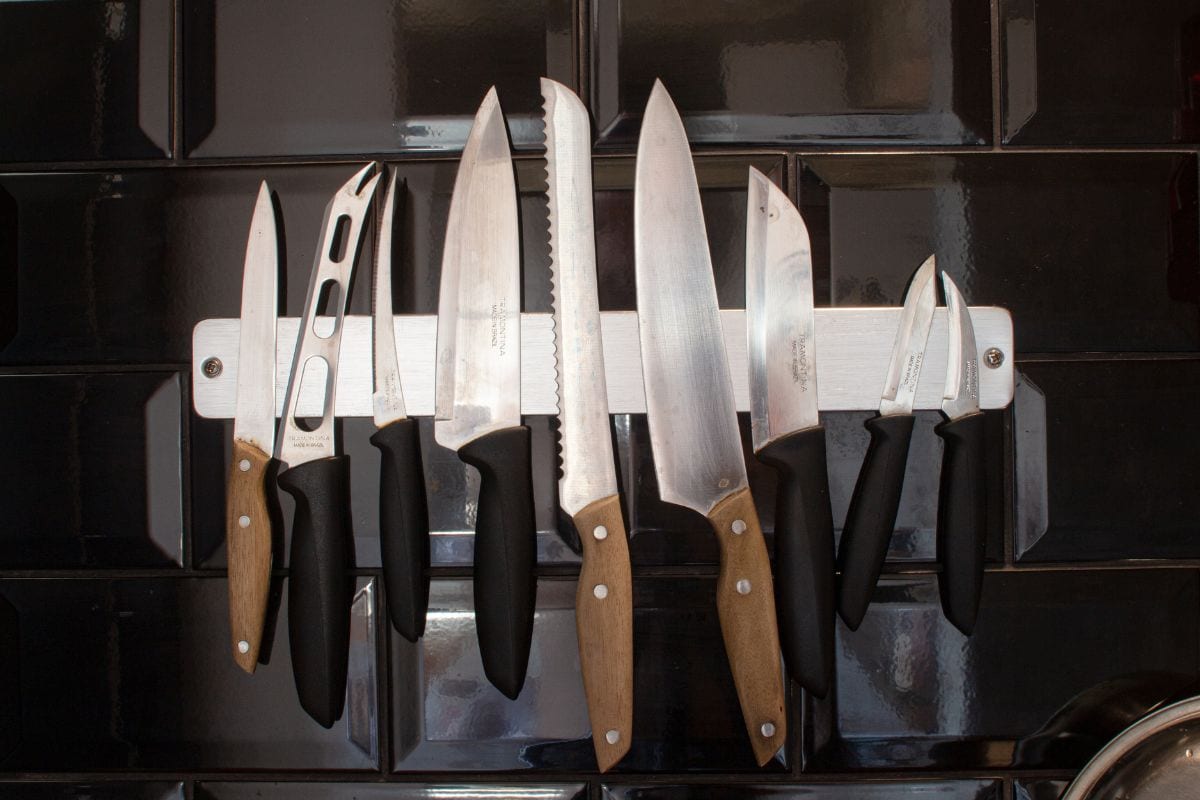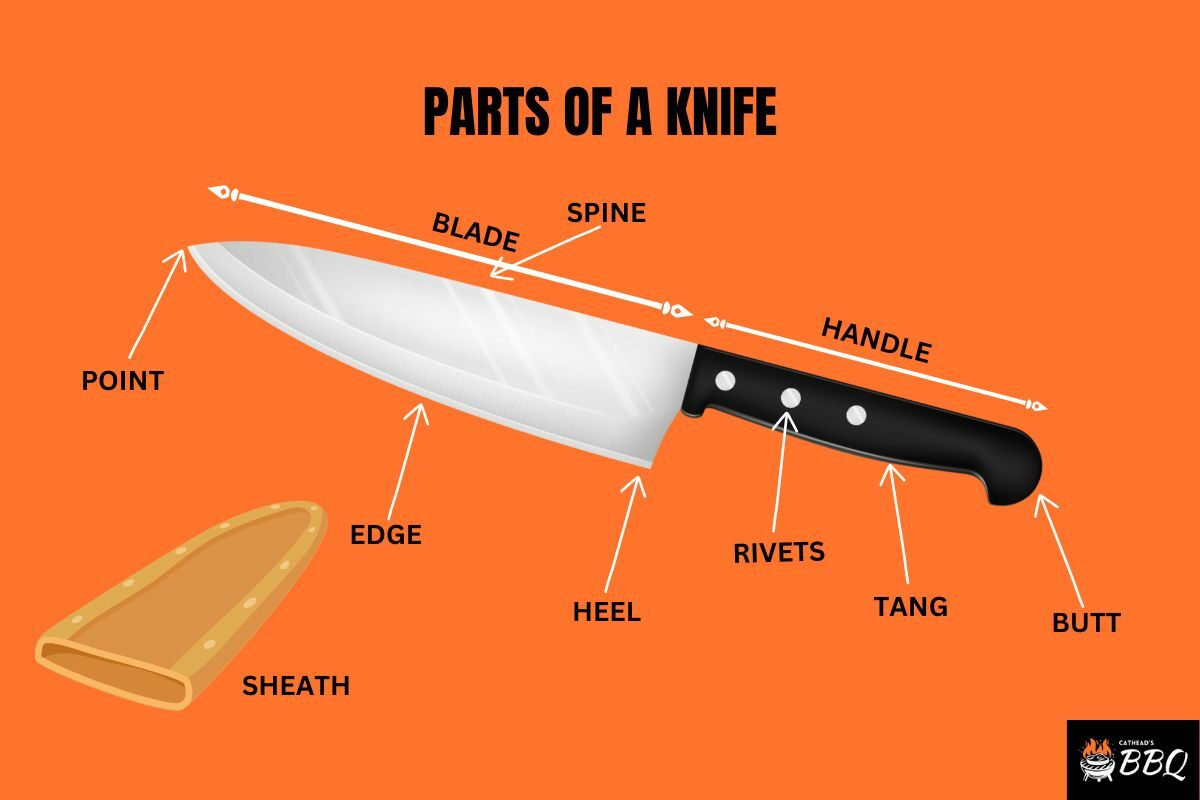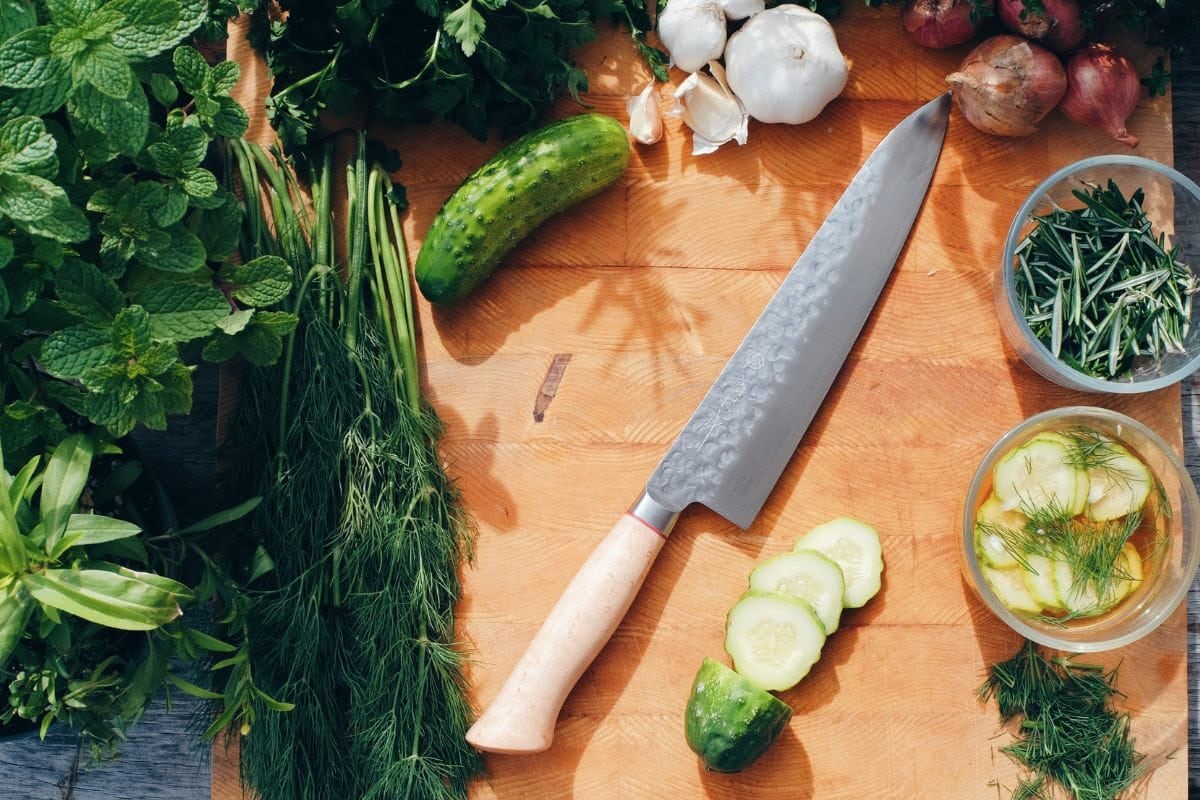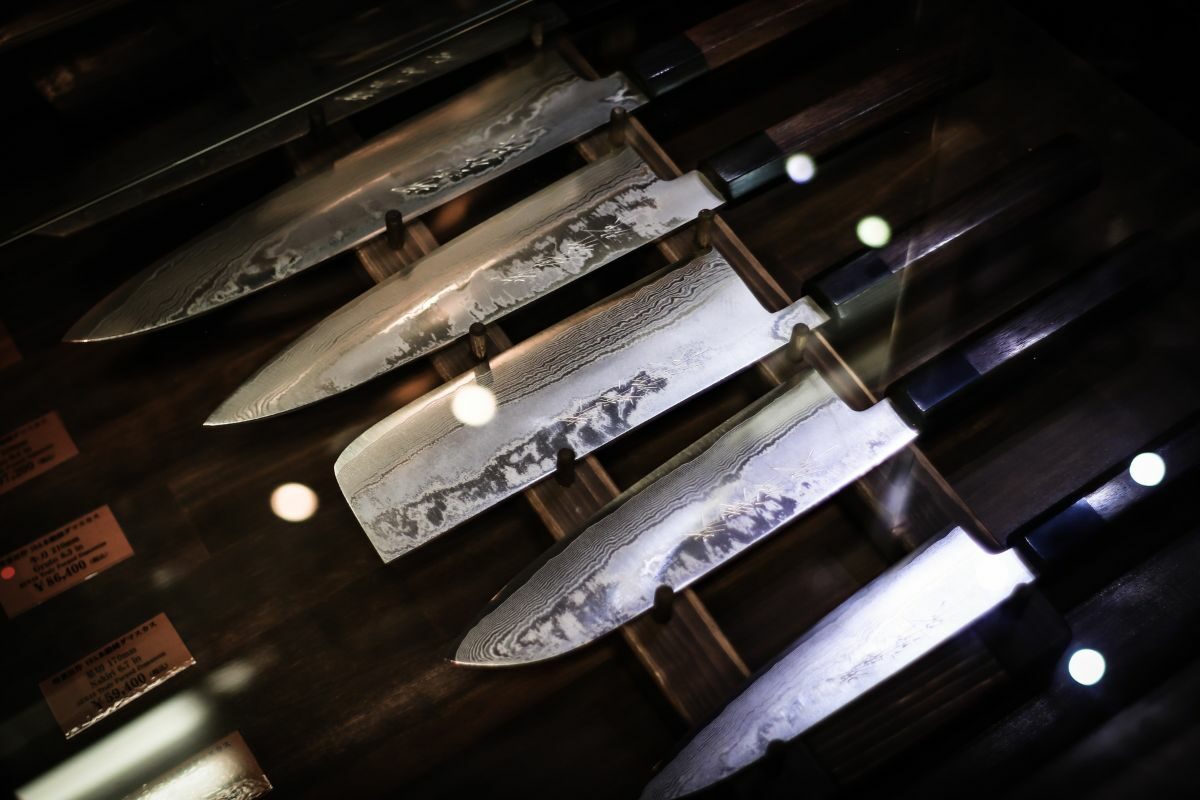You can’t downplay the role of each part of a knife as a chef and BBQ master. From the blade to the point and handle, every component matters. Whether I’m preparing a steak or delicately slicing vegetables, the performance of my knife directly impacts the outcome of my BBQ creations. That’s why knowing the intricacies of knife anatomy is a vital aspect of my expertise.
Each part of a knife, from the precision-engineered blade to the ergonomically designed handle, contributes to its overall functionality and performance. Understanding the interplay between these components allows me to select the ideal knife for specific cooking tasks. So, join me as I break down the anatomy of a knife into 10 parts!

Most knives consist of 10 main parts. Understanding and noticing these parts will help you decide on which type of knife to use depending on your recipe. You will also be able to appreciate the craftsmanship that goes behind making this essential tool. After all, not all knives are built equal.

When it comes to the parts of a knife, the knife blade takes center stage. It’s the heart of the knife. The blade defines the knife’s purpose and functionality. This sharpened metal portion is responsible for all the cutting, slicing, and chopping action.
First, knife blades can be crafted from stainless steel, high-carbon steel, or even ceramic. Each offers its unique characteristics of durability, sharpness, and maintenance.
Talking about the blade length, there are a couple of options; from petite paring knives to hefty chef’s knives, blade length can vary greatly. Longer blades are great for tasks that require more surface area, while shorter blades offer better maneuverability. Note, however, that 10 to 12 inches is usually the length of the main knife of professional chefs.
Furthermore, the blade shape is another crucial factor to consider. There are straight edges for precise slicing, curved blades for effortless rocking motions, and even serrated blades for tackling crusty bread or delicate tomatoes.
The knife edge, also known as the cutting edge, is the blade’s sharp portion. It runs along one side of the blade and plays a crucial role in determining the sharpness and cutting ability of the knife.
First, knives can have different edge styles, each suited for specific tasks.
A straight edge is a classic choice if you want a sharp blade. It provides a clean and precise cut. On the other hand, serrated knives feature small, tooth-like serrations that excel at gripping and cutting through tough materials, such as bread or meats. Some knives even have a combination of both straight and serrated edges, giving you the best of both worlds.
Next, we have the edge grind. This refers to the shape of the bevel along the edge. Common grind types include flat, convex, and hollow grinds, each influencing the cutting performance and durability of the knife. The grind affects how the blade interacts with the material being cut and can impact the knife’s overall functionality.
The knife’s handle provides a secure grip and control when using the knife.
The knife handle is commonly made from materials such as wood, plastic, or metal. Each material offers its benefits, such as durability, resistance to moisture, and ease of maintenance.
The choice of handle material depends on personal preference and the specific demands of the task.
Another crucial aspect of a quality knife is the handle grip. A well-crafted handle ensures a firm and comfortable grip, even when dealing with wet or slippery conditions. Some handles feature textured patterns or ergonomic contours to enhance grip and reduce fatigue during extended use.
The tang is basically the part of the blade that extends into the handle. It’s like the backbone of the knife, giving it stability and strength. You’ve got two main types: full tang and partial tang.
A full tang knife is a fixed-blade knife. The blade runs the whole handle length, following the entire shape. This means it’s super sturdy and balanced. If you want a chef’s knife, this is what you have to choose. These knives are the ones that professional chefs and outdoor enthusiasts swear by because they can handle some serious chopping and slicing. Some top full tang knives include chef knives such as the:
No products found.
On the other hand, a partial tang only goes partway into the handle. It’s not as beefy as a full tang, but it still gets the job done for everyday kitchen tasks. In addition, it’s cheaper than full tang knives and more maneuverable, a convenient feature you can find in pocket knives.
Having a full tang or a partial tang really depends on your needs and preferences. If you’re looking for a chef’s knife or heavy-duty knives for demanding tasks, like breaking down large cuts of meat or going on outdoor adventures, a full tang is the way to go. But a partial tang is fine if you just need a kitchen companion for everyday cooking.
Now let’s talk about the spine of a knife. It’s the backside of the blade that runs opposite the cutting edge. Now, I know the spotlight usually shines on the edge, but the spine is no sidekick. It’s got its own important role to play in making that knife a true kitchen warrior.
The thickness of the spine can vary depending on what you need that knife for. A thicker spine means you’ve got some serious chopping power in your hands. It’s all about durability and stability, letting you handle those tough ingredients with confidence. When you’ve got a thick-spined knife, it can handle heavy lifting and serve as a resting surface for your hand.
But hey, sometimes you need finesse and precision, right? That’s where a thinner spine comes into play. It allows you to make those delicate, intricate cuts with ease.
Now, let’s talk about the heel of a knife. You know that chunky part of the blade before the handle, right at the back of the blade? Yeah, that’s the heel I’m talking about. It’s the beefier section that means business.
Think of the heel as the muscle of the knife. It’s wider, thicker, and stronger than the rest of the blade. When you need some serious cutting power, the heel delivers. It’s perfect for tackling those tough tasks that require a bit of force, like chopping up a whole chicken or dicing up a mountain of onions.
But here’s the cool part: heels come in different shapes and designs. Some have a gentle curve, while others are squared off. The shape depends on the knife’s job. A curved heel is fantastic for rocking motions, like mincing herbs or swiftly chopping through veggies. On the other hand, a squared-off heel gives you a sturdy platform for controlled slicing and dicing.
The butt is the end of the handle. It plays a crucial role in keeping things balanced and stable. Think of it as the counterweight to the blade. It helps maintain the knife’s equilibrium so that you can handle it with precision and control.
Now, the design of the butt can be pretty diverse. Some BBQ knives have a rounded and smooth end, while others might have a more pronounced feature. It really depends on the knife and what the designers had in mind. But regardless of the style, the butt always contributes to the overall balance and feel of the knife.

Let’s talk about rivets, those little metal fasteners that hold everything together in a knife. They might be small, but they play a big role in securely attaching the handle to the tang.
You see, rivets are like the glue that holds the knife together. They create a strong and stable connection between the handle and the tang, ensuring that your knife stays intact even during heavy use.
The number of rivets can vary depending on how the knife is built. Some knives have two rivets, while others may have three or more. It all depends on the design and the level of stability required. More rivets generally mean a stronger and more secure knife.
But rivets aren’t just about functionality. They also contribute to the knife’s overall aesthetics. The materials and design of the rivets can add a touch of style and uniqueness to the handle. Whether they’re sleek stainless steel rivets or decorative brass pins, they add that extra flair to your trusty knife.
Now, let’s talk about the pointy end of the knife. Yep, I’m talking about that little tip of the blade. It can make all the difference in those delicate tasks.
It is the secret weapon of the knife. It’s perfect when you need to pierce or score something with precision.
Think of this: you’re preparing a mouthwatering steak, and you want to create those beautiful scoring marks. That’s where the sharp point comes in handy. With a well-designed point, you can make those perfect little incisions that give your meat that extra touch of presentation.
But here’s the thing, not all points are created equal. Some knives have a sharp, fine point perfect for intricate tasks. It’s like a needle at the end of your blade, ready to perform surgical precision. On the other hand, some knives have a more rounded or angled tip, which can be great for tasks requiring more maneuverability.
You know, that protective covering that keeps your knife safe and sound when you’re not using it. Yeah, that’s the sheath! A sheath isn’t actually one of the parts of a knife but it’s a protective accessory that often comes with it. It is like a cozy home for your knife, providing a secure and snug place to rest. Sheaths can be made from various materials, like leather, nylon, paper, or even tough plastic. Each material has its advantages, from the classic and timeless feel of leather to the durability of nylon or plastic.
Now, the design of a sheath can also vary. Some sheaths have simple and straightforward designs, while others may have added features like belt loops or snaps for easy carrying and accessibility. It’s all about finding a sheath that suits your needs and preferences.
A well-designed sheath is essential for keeping your knife secure and protected. It prevents accidental cuts and damage, ensuring your knife stays in top-notch condition for your next culinary adventure. Some knives, like the KYOKU Gin Series Chef Knife, come with a dedicated sheath, which is a bonus. But for others, you might need to purchase a suitable sheath separately.

Understanding the different parts of a knife enables us to appreciate the craftsmanship and functionality of this essential tool. From the blade to the handle, each component contributes to the knife’s overall performance.
Whether you’re exploring folding knives, fixed-blade knives, or kitchen knives, the anatomy of a knife remains consistent. By considering the various parts and their features, you can make an informed decision when selecting a knife that suits your needs.